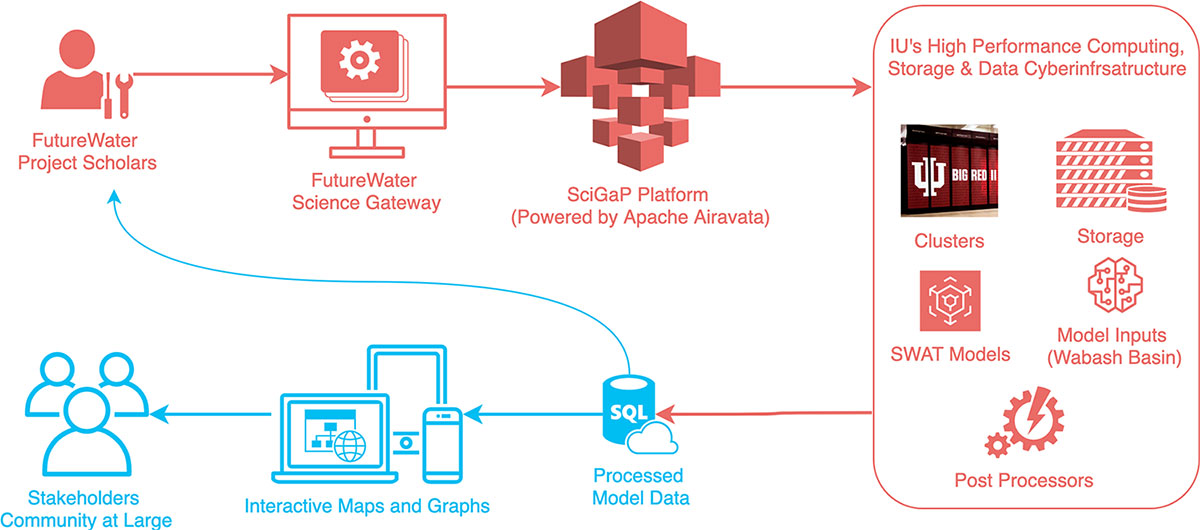The results we display in maps and graphs represent our application and adaptation of well-accepted scientific data and models. Future water science and all science at its best is subject to continual testing, questioning, improvement and revision. The data and models available in years to come, and the assumptions underlying them, may produce results that differ in significant ways from those we can provide today.
The models on this community platform are products of collective efforts by a large group of post-doctoral, graduate, and undergraduate students, UITS staff, and faculty members. The platform is also intended for teaching the impact of climate change.



